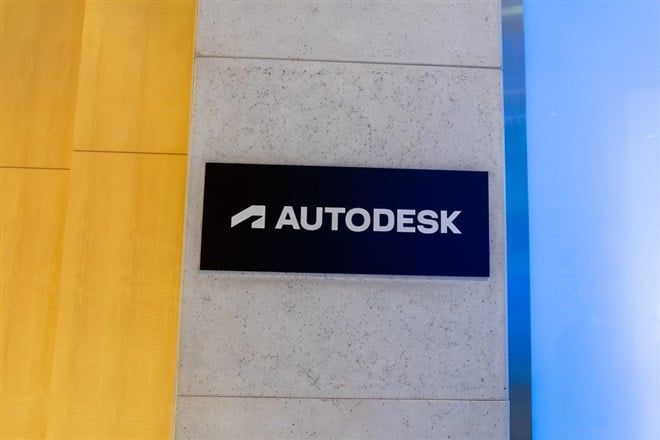Ticker Reports for October 13th
China's EV Rally: Should Investors Chase, Avoid, or Buy the Dip?
After years of economic headwinds, China is making a comeback, with the government's newly announced stimulus measures igniting a significant rally across Chinese equities. Among the sectors benefiting from this momentum are electric vehicle (EV) automakers, which have surged in the wake of this economic boost. Following the stimulus announcement, designed to revive the sluggish economy, major Chinese EV players like Li Auto, NIO, and XPeng have seen impressive gains. Li Auto has surged 37% this month alone, NIO has climbed over 11%, and XPeng is up a remarkable 38%.
This raises a fundamental question for investors: Should they chase the rally, avoid it altogether, or hold off for a potential pullback? Let's take a closer look at each automaker to see whether substance is behind the recent rally.
XPeng Outperforms and Analysts Turn Bullish
XPeng Inc. (NYSE: XPEV) has been one of the standout beneficiaries of the renewed optimism in Chinese stocks, surging over 38% this month. The company, which designs and manufactures smart electric vehicles in China, has attracted significant attention, and analysts remain bullish on its future prospects.
Tim Hsiao of Morgan Stanley recently reiterated his Buy rating on the stock with an $11.70 price target. Hsiao highlighted the upcoming P7+ model as a potential game-changer for the automaker, particularly due to its spacious interior and advanced smart cockpit features, which are expected to resonate with family users.
According to Hsiao, the P7+ offers interior space comparable to SUVs and MPVs, with more room and trunk capacity than some luxury models. This, combined with its tech-forward design, positions it as a major volume driver for XPeng through the end of the year and into 2025. Alongside the P7+, the recently launched MONA M03 is also expected to contribute to XPeng’s growth, with production ramping up to meet a target of 25,000 to 30,000 units by December.
Ahead of its upcoming earnings report on November 20, XPeng is consolidating at recent highs, bolstered by record-high September deliveries. As the company strategically prepares for mass deliveries, it looks well-positioned to continue its upward trajectory, though investors may want to watch for any post-earnings volatility.
Li Auto Records Record Sales in September but Risks Losing Steam
Li Auto Inc. (NASDAQ: LI) has been riding the wave of optimism surrounding Chinese stocks, surging over 37% this month. The company, which operates in China’s premium smart electric vehicle market, specializes in multipurpose vehicles (MPVs) and sport utility vehicles (SUVs). Li Auto has benefited from favorable tailwinds following the Chinese government’s recent stimulus measures, adding to the momentum with solid sales figures, 53,700 units sold in September, a 49% year-over-year increase.
Analysts remain bullish on the stock, with a consensus Moderate Buy rating and price targets forecasting over 20% upside. However, Macquarie analysts have recently maintained a more cautious stance, reiterating a Neutral rating with a $33 price target. They pointed out that while Li Auto’s current lineup, especially the L series, continues to perform well, the absence of new model releases for the rest of the year could pose challenges. The company may face pressure from price competition, which could impact margins, and a potential shift in demand away from extended-range electric vehicles (EREVs) to fully electric models.
Despite these risks, Macquarie acknowledges that if Li Auto can maintain its sales momentum and successfully introduce a BEV SUV in 2025, it could outperform expectations. The analysts see a modest upside for now, but investors will need to weigh the risks of slowing momentum against the company’s longer-term potential.
NIO’s Deliveries Steadily Grow Amidst Cash Infusion
NIO Inc. (NYSE: NIO), one of China's leading EV manufacturers, has seen its stock rise over 11% this month, trailing behind rivals like XPeng and Li Auto. However, NIO has consistently delivered over 20,000 vehicles for the past five months, including 21,181 in September, a 35% year-over-year increase. This includes the first deliveries from its new affordable sub-brand, Onvo.
For Q3 2024, NIO set a record with 61,855 vehicle deliveries, marking an 11.6% growth year-over-year. Additionally, the company secured a $1.9 billion investment from a group of strategic investors, bolstering its financial position as it gears up for further growth.
This funding will help NIO continue expanding its services and technology as it works to scale in the competitive EV market.
Despite the recent cash infusion and steady vehicle deliveries exceeding 20,000, analysts are less optimistic about NIO than its peers. The stock holds a consensus Hold rating, with price targets indicating potential downside.
Alex's "Next Magnificent Seven" Stocks
Today Alex Green is releasing his new breakdown of AI's "Next Magnificent Seven."
So please make some time to watch it.
3 Micro-Caps Set for Major Moves: Balancing Risk and Opportunity
Micro-cap stocks can come in many shapes and sizes. Some might be once successful firms that lost their way and are looking to recover their prior glory. Others are companies that may have yet to generate any substantial revenues but could growth strongly if their offerings start to catch on.
Investing successfully in micro-cap stocks is difficult. Selecting the wrong company can lead to a loss of all or a substantial part of an investment. However, picking the right one could result in a big payday. The iShares Micro-Cap ETF (NYSEARCA: IWC) has provided a total return of just over 100% over the past 10 years. That severely lags the SPDR S&P 500 ETF Trust (NYSEARCA: SPY), which has returned 266% over the same period.
Below, I’ll dive into three micro-cap companies that show large potential upside but also carry significant risk.
Amprius: Advanced Battery Technology, But Significant Scale Is Needed
First up is Amprius (NYSE: AMPX) Technologies. The industrial company makes high-density lithium-ion batteries that use silicon nanowire anodes. Compared to the traditional graphite anodes that lithium-ion batteries use, these anodes take up less space, allowing them to package more lithium into a battery. This technology can substantially extend battery life in a variety of applications.
The company shows the range of a Tesla Model 3, and the flight time for a drone can be increased by around 75%. It also shows that its batteries can charge up to 80%, around five times faster than graphite anode batteries. The company’s products are primarily used in drones and high-altitude pseudo-satellites (“HAPS”).
However, this company is extremely unprofitable. The cost directly associated with producing its batteries was around three times higher than the revenue it made from them. This gave the firm a gross profit margin of -195% last quarter. With over $12 million in revenue over the last twelve months, it is reasonable to think the company could be profitable if it scaled up massively.
Price targets are wide-ranging for this firm, but a target released by Oppenheimer implies 1,117% upside. Shares have been on the rise as of late after the company disclosed $20 million in new orders. Still, the company will need to achieve much higher sales than that to be profitable. It is designing a new manufacturing facility in Colorado to increase its production capacity.
Comstock: Expanding Capacity to Capitalize Off Solar Panel Recycling
Comstock Inc. (NYSE: LODE) is a decarbonization and recycling company. One of its biggest focuses right now is building up capacity to recycle solar panel metal and then resell it.
The company currently has no substantial revenues and frequently issues more equity to fund its operations. However, it does have substantial cash on its balance sheet that it can use for funding currently. Shares have been on the rise since the company recorded its first shipments and sales of renewable metal extracted from old solar panels.
The company recently secured its first lease for a large-scale facility to expand its recycling capacity. It believes that this part of the business could be profitable by 2026 and plans to have three facilities opened by then.
Right now, the stock is trading at just $5 million higher than its assets minus its liabilities, or its book value.
Getting traction in the solar panel recycling business could mean big things for the stock, as according to MIT, “8 million tons of decommissioned solar panels could accumulate by 2030." Noble Capital Markets sees a 468% upside in this stock based on their $2.60 price target released on Aug. 13.
Marinus Hopes to Expand the Market for Its Key Drug
Last is Marinus Pharmaceuticals (NASDAQ: MRNS). The company is currently waiting to release Phase 3 Food and Drug Administration (FDA) results for its drug ganaxalone.
The drug aims to treat Tuberous Sclerosis Complex (TSC). If approved, the company could use its drug to treat around 12,700 people.
The FDA has already approved the drug for a condition with similar symptoms. However, a TSC approval could generate much more revenue as it affects many more patients.
The average price target for the firm sits at $8.50. From the current $1.65 price, this represents an over 400% potential upside for the stock.
The company plans to release the results of this Phase 3 trial in less than a month.
If the results are strong, they could have a massive positive effect on the stock price. However, if they disappoint, they could also greatly hurt the stock price, leading to a big downgrade.
The real story behind China's 'seizure' of US farmland
The media, of course, won't touch this explosive story…
But experts are not sugarcoating it and they're warning Americans:
"This is a two-pronged attack to starve America into submission and dethrone the US Dollar."
So if you have a nest egg you cannot afford to lose in this all-out economic war…
Autodesk Named a "Top Pick" by Morgan Stanley—Is It Time to Buy?
Autodesk (NASDAQ: ADSK) is a technology company that provides digital solutions to customers focused on solving physical problems. With Morgan Stanley recently naming this stock one of its “top picks," it feels pertinent to dive into what this company does and understand what aspects could make it a strong investment. I’ll explain the company’s products and strategy going forward and give my assessment of the stock right now.
Autodesk: A Provider of Key Design and Construction Software
Autodesk mainly develops and sells software for architecture, engineering, and construction (AEC). Last quarter, revenue from software products specifically designed for AEC accounted for 47% of total revenue. However, the company also breaks out revenue for its largest brand of software products called AutoCAD. These same industries largely use AutoCAD; however, other industries also use it. AutoCAD brand revenues made up 26% of the total last quarter.
“CAD” stands for computer-aided design. The software is used to create 2D designs and 3D models of physical projects. Essentially, designers create all modern physical designs using some type of CAD software.
Substantially all of the company’s revenue comes from subscriptions. The company uses a mix of direct and indirect sales, but 63% of sales came from its distributors and resellers in fiscal 2024. The company’s revenues are fairly diversified by geography. America made up 43% of the total last quarter, Europe, the Middle East, and Africa made up 38%, and Asia Pacific made up the remainder.
Autodesk has several key components of its strategy going forward. One is that it intends to transition more to direct sales. This aims to give the company more customer data, provide more pricing control, and ultimately increase revenue.
Another key aspect is to expand its product adoption across the lifecycle of building a physical project. It is currently considered a dominant player in design software but not necessarily in manufacturing and construction. It wants to grow the adoption of its technology in those areas and become an end-to-end solution across these vectors.
To do this, it specifically wants to increase the adoption of its Fusion 360, Forma, and Flow products. The company accounts for these products in its “make” revenue, as opposed to its “design” revenue.
How Autodesk Is Improving Its Operating Margins
Looking at the company’s financials, we see it is growing revenue solidly at between 10% and 12% over the last few quarters. The company also appears to be executing well on growing its “make” business. Last quarter, revenues in this division grew by 25%. This represents a significant acceleration from the same period a year ago, when “make” revenues increased just 15%.
Additionally, the company has shown success in increasing its adjusted operating margin. Excluding foreign exchange and a shift to direct sales, the company has raised its operating margin by 300 basis points since fiscal 2023. It says it is a year ahead of schedule in achieving its adjusted operating margin of between 38% and 40%, excluding these effects.
The company is excluding the effects of the new sales model as it has a neutral effect on operating income. However, due to accounting, it increases revenue and operating expenses in the near term, making the operating margin appear lower. The strategy aims to improve margins long-term, but it will hurt them short-term during implementation.
Squaring Morgan Stanley’s Assessment
According to MT Newswires, Morgan Stanley believes the company has substantial room to improve margins. It thinks the GAAP operating margin could expand by up to 800 basis points by 2028 and says the company’s valuation is in line with peers. The average of the forward P/E ratios of companies Autodesk lists as competitors in its Form 10-K supports this valuation assessment. From its current level, Morgan Stanley's price target indicates a 15% upside in the stock. Its target is on the high end of estimates.
Through its new sales strategy, the company can expand margins in the long term. It is also pushing to increase the "make" part of its business. Last quarter, the design part of the business made over seven times the revenue of the design business, which shows its growth potential. Becoming an end-to-end provider could allow the company to expand margins as it could sell design and make products together.
Still, the company is fairly cyclical, with a beta of 1.5. With nonresidential construction spending growth expected to fall significantly next year, personally, I don’t see this as a great time to get into this stock.






0 Response to "🌟 3 Micro-Caps Set for Major Moves: Balancing Risk and Opportunity"
Post a Comment